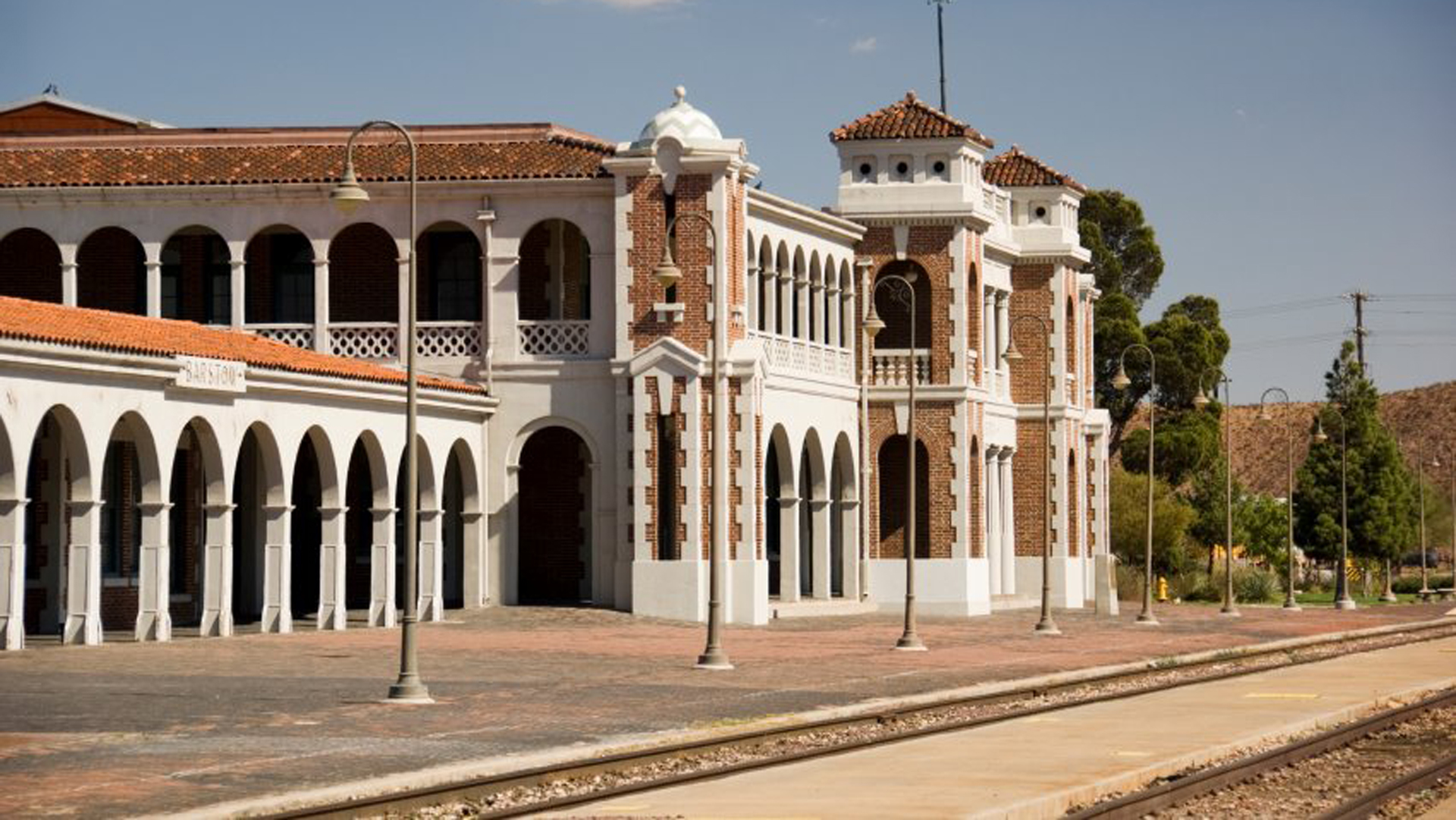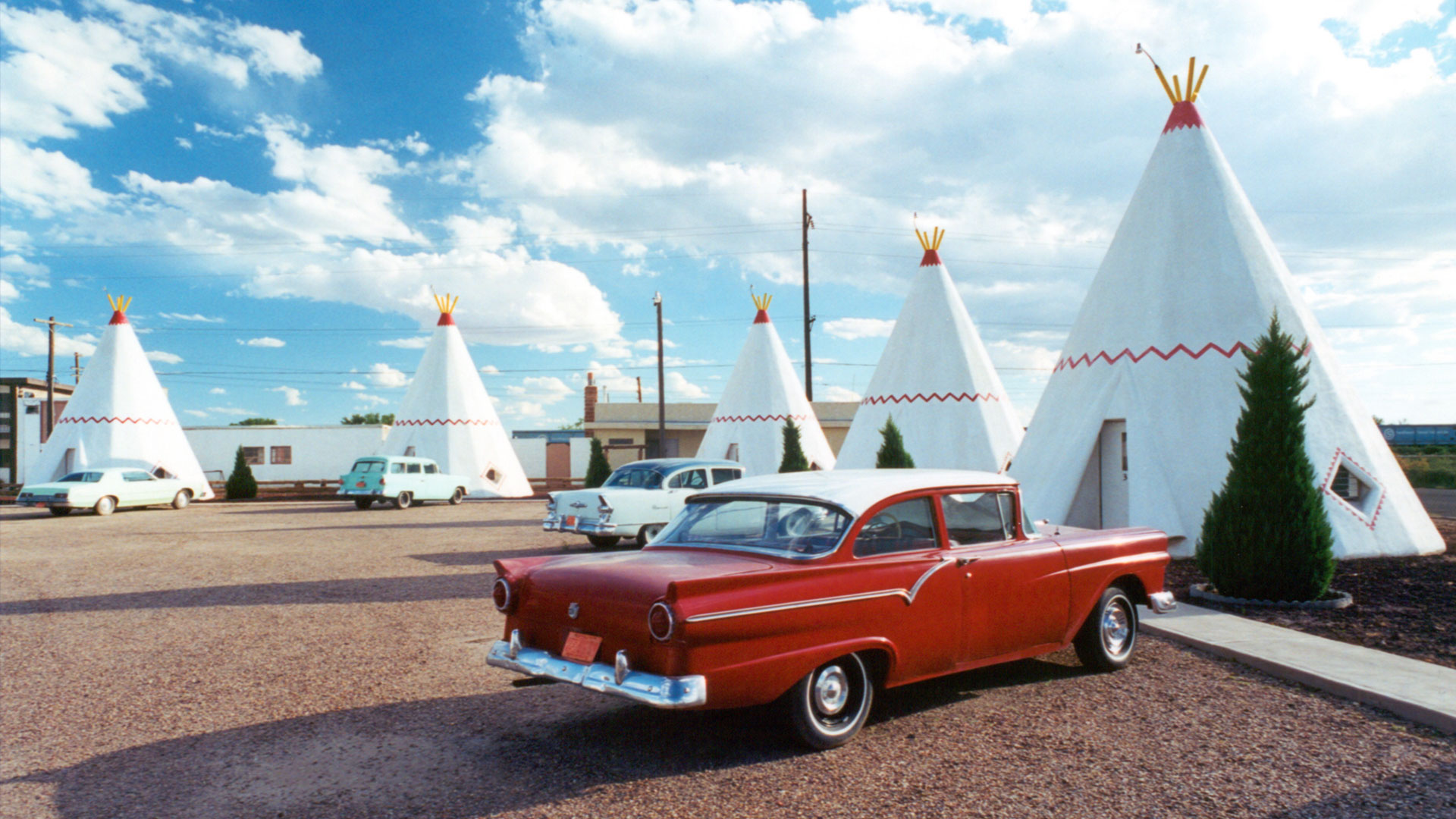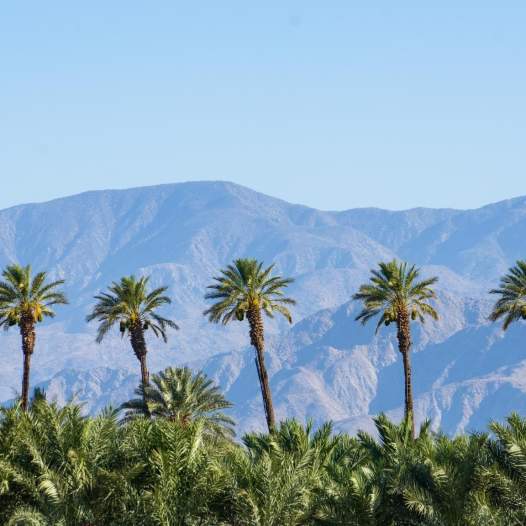The famous 1946 song that invites you to “Get Your Kicks on Route 66” praised the trip along the historic “Mother Road” that led drivers to more than just road-side discovery. Route 66 chronicles a time when heading west stood for finding new opportunities while enjoying the diverse scenery that unfolded along the way. The 2,400-mile Route 66, also coined America’s Highway, runs from the Midwest to Los Angeles, but desert residents can get a fascinating look at an important portion of the highway (with just a few detours) beginning in Needles and ending in Ontario and Upland.
Not unlike travelers 60 years ago, the easy road trip is filled with new discoveries each day, from geological wonders to funky roadside cafes and landmarks with a bounty of California history dedicated to the traveling freedom revolutionized by the car.

Day One: Route 66 through the Gateway City
A three-hour trip through the upper desert leads to Needles on the Colorado River. Needles, referred to as the gateway to California on Route 66, is one of the oldest cities in California and was named after the spikey rock outcroppings directly across the river in Arizona. A railroad town since 1883, the city continues to play an important role in the railroad trade.
Pirate Cove Resort & Marina is a surprising 1,000-acre oasis that straddles the river and the Mother Road and makes a great jumping off point for exploring the historic roadway. An RV park is popular here, but new two-story condos with kitchens make for an ideal weekday stay if you want to avoid a livelier weekend crowd. The resort hosts a popular restaurant and bar, hiking/nature trails, a zip line over the water and river recreation.
Plan to take the resort’s 2.5-hour river cruise to the Topock Gorge, a mini-Grand Canyon, petroglyphs and the Old Trails Arch Bridge that was featured in the famous Depression-era movie, “The Grapes of Wrath.” Along the way, you may be lucky enough to spot Bighorns, wild donkeys and Bald Eagles.
Day Two: Craters, Chicken and the Bagdad Café
Although once a major stop for weary travelers along Route 66, 1858-founded Amboy met its inevitable decline with the construction of Interstate 40. The town has a handful of surviving buildings today. Among those the much photographed, retro-designed Roy’s Motel and Cafe—once a service station, then café and motel owned by the town’s original owner and family until its eventual foreclosure. In 2005, the property and town was purchased by Albert Okura of Juan Pollo restaurant fame who has promised to preserve the town and re-open Roy’s.
Just west of Amboy are two extinct volcanoes, the Pisgah Crater and the Amboy Crater, a 6,000-year-old cinder cone. Standing on the Amboy Crater observation deck, take in the 27 square feet of lava flow, a geological wonder in the middle of the desert, and try to imagine the spectacular fiery eruptions that occurred some 80,000 years ago.
Continuing west on Route 66 toward Barstow, you’ll pass by the 1940’s mining town of Ludlow. Once a welcoming stop for passing motorists with a motor court, café and gas station, the original Ludlow is a ghost town today, thanks to the advent of Interstate 40 in the late 1960s. A newer Ludlow just north of the off-ramp of Interstate 40 reemerged in the 1970s to serve the traveler once again with gas stations, a small motel and restaurant.
In Newberry Springs, at the foot of the mountains on the south side of Route 66, you will find another landmark of the roadway—the Bagdad Café. Mention the name to French tourists, who come by the busload, and they will tell you about its cinematic cult allure. Formally known as the Sidewinder Café, the tiny café gained international fame when the movie “The Bagdad Café” was filmed there. Its flamboyant owner, Andrea Pruett, holds court and is a celebrity in her own right. Stop for the souvenirs, a chat with Andrea and a tempting handmade milk shake.
Day Three: Route 66 and the Railroad
Now, heading on to Barstow, the road reveals early railroad history as well as a few surprises.

So much more than just a respite along the way to other Mojave destinations—Barstow offers some important California history. Barstow is named after its founder, William Barstow Strong, who was the president of the Atchison, Topeka and Santa Fe Railroad. The Southern Pacific built a line from Mojave through Barstow to Needles in 1883, and, even today, much of its economy depends on transportation. Before the advent of the interstate highway system, Barstow was an important stop on both Route 66 and Interstate 91.
Probably the most recognizable symbol of Barstow’s train heritage is the Harvey House, built in 1910. Listed on the National Register of Historic Places, the once elegant rail depot, restaurant and hotel complex was designed by renowned Fred Harvey Company with a blend of Spanish Renaissance and Classical Revival architecture styles.
Today, the structure functions as an Amtrak stop, visitor center and locale of the Barstow Route 66 Mother Road Museum. The museum displays an ever-growing collection of historic photographs and artifacts related to Route 66 Main Street in Barstow, and exhibits give a fascinating historical view of the development of the roadway, from early pioneer trails to the railroads and the automobile.
Barstow is also known for its historic murals that line the old town area along Route 66’s Main Street. Take a self-guided tour of 15 murals that grace the sides of downtown structures for a drive-by history lesson of the area.
Day Four: Bottles, Wigwams and History
Heading west from Barstow, an unusual “outdoor” art gallery lines the iconic roadway. As a child, Elmer Long used to travel through the desert with his dad who would collect discarded objects they found. When his father passed away, he left behind a sizable collection of colorful bottles, and Long struggled to decide what to do with the unusual collection. One day, the artist decided to build his first bottle tree on his desert ranch. Today, Long’s Bottle Tree Ranch on Route 66 west of Barstow has hundreds of imaginative scrap metal bottle trees made from recyclable discoveries, from typewriters to saxophones. There is no charge to wander the outdoor glass and iron “gallery,” and Long is often there to greet the thousands of guests who stop by and chat about his treasured creations.
Victorville’s Tribute
About 15 miles further on the Mother Road is Victorville, home to another Route 66 museum. About 10,000 visitors make the California Route 66 Museum a must-see stop. Sharon Foster, a museum docent and board member, said that 60% of visitors are international travelers who have seen the “Grapes of Wrath,” and, most recently, Disney’s “Cars.” Many are also doing the trek or part of it and want to celebrate its history. The museum has three rooms dedicated to the history of the Mother Road and several hands-on exhibits that make unique photo ops, from an old VW hippie van to a classic 40’s aluminum trailer set for a picnic.
End with an Iconic Motel

A journey along California’s Route 66 is not complete without a stop at the Wigwam Motel that has been welcoming travel-weary friends since 1949. The Patel family took over the iconic motel about ten years ago and restored the 19 “wigwams” and added a pool, grill and upgrades such as flat screen televisions and refrigerators. Beyond the novel façade, the motel offers standard rooms that are sprinkled privately around the grounds. The Patel’s call their motel “the last historic stop” on the road before heading back to reality.





















